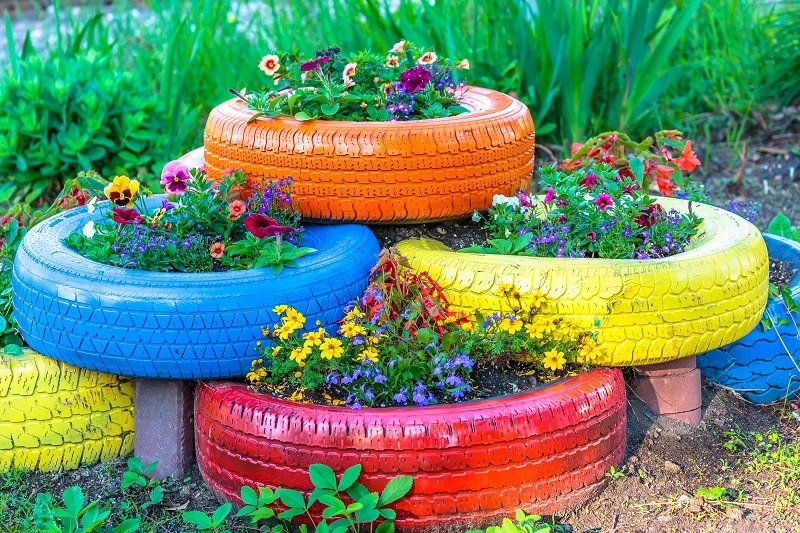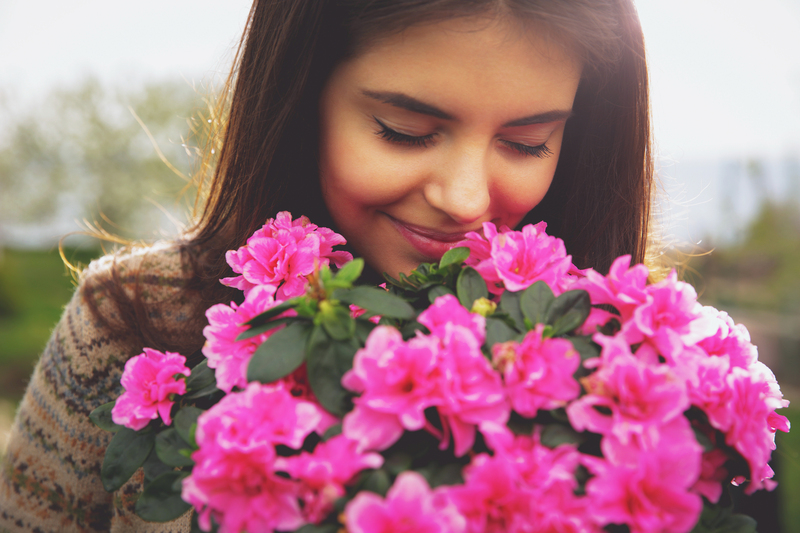The Symbolism and Color Narratives Found in Peony Flowers
Posted on 18/08/2025
The Enduring Allure of Peonies: An Exploration of Symbolism and Color Narratives
Peonies have long occupied a cherished place in gardens, art, and culture worldwide. Beyond their ravishing blooms and lush foliage, these captivating flowers carry an array of meanings that make them beloved subjects for poets, artists, and floral enthusiasts alike. In this detailed guide, we will delve deep into the symbolism and color narratives found in peony flowers, examining how their hues and historical significance shape the way we perceive and utilize these magnificent blossoms.

The Rich Symbolism of Peony Flowers
Peonies have been steeped in legend and lore for centuries. From ancient China to modern bouquets, peony symbolism weaves through tales of romance, prosperity, and honor. Understanding these meanings can enhance the enjoyment of these florals in both personal and decorative contexts.
The Legends of the Peony
The origins of peony symbolism date back at least 4,000 years to China, where these flowers were regarded as the "King of Flowers." Frequently planted in imperial gardens, peonies symbolized wealth, status, and honor. Their lushness represented abundance, and the fullness of their petals mirrored good fortune and a happy marriage.
In Greek mythology, the peony's story is equally rich. The flower is named after Paion, the physician of the gods, who was turned into a peony flower to save him from his mentor's jealousy. Thus, peonies also came to represent healing and protection.
Peonies as Emblems of Romance and Prosperity
- Love and Romance: The voluminous and blushing blooms of peonies are often seen as an emblem of love. They are widely used in weddings as they are believed to attract happy marriages and bless the union with long-lasting fortune.
- Prosperity and Honor: In both Chinese and Western symbolism, peonies stand for prosperity and nobility. Gifting peonies expresses a wish for good fortune and success.
- Compassion and Beauty: The mesmerizing layers of soft petals evoke kindness and delicate beauty, often connecting peonies to themes of compassion and feminine grace.
Peony Color Meanings: Narratives in Every Hue
One of the most fascinating aspects of peonies is the diversity of their colors, each imparting its own unique meaning and narrative. Whether you're choosing peonies for a particular occasion or simply wish to appreciate the artistry that nature offers, understanding the stories told by each shade adds an enriched layer to their beauty.
Pink Peonies: Emblems of Romance and Good Fortune
- Romance and Love: Pink peonies are perhaps the most popular choice in weddings. Their blushing hues echo the tender feelings of love, affection, and budding romance.
- Good Luck: In Asian cultures, pink peonies are believed to bring good fortune, especially to those embarking on a new relationship or marriage.
- Compassion: Soft pinks also symbolize gentle kindness, making them an ideal gesture for friends or loved ones.
Red Peonies: The Call of Respect, Honor, and Passion
- Passionate Love: With their deep, rich color, red peonies are associated with strong emotions and passionate romance, much like the symbolism of red roses.
- Honor and Respect: In traditional Chinese celebrations, red peonies are highly prized, representing honor, respect for elders, and the hope for prosperity.
- Courage and Sacrifice: The intensity of red is often linked to bravery and a willingness to make sacrifices for those we love.
White Peonies: Symbols of Purity, Apology, and Elegance
- Purity and Innocence: White peonies evoke feelings of innocence, purity, and a new beginning. They are often used in ceremonies and rituals that emphasize a fresh start or a clean slate.
- Apologies and Regrets: White peonies can also be given as a gesture of apology, signifying a sincere request for forgiveness and a desire to mend relationships.
- Elegance and Simplicity: The understated beauty of white peonies symbolizes unmatched elegance and timelessness.
Yellow and Golden Peonies: Narratives of Joy and Success
- Happiness and Joy: Yellow peonies radiate feelings of warmth, happiness, and cheer.
- Friendship: Bright shades are often associated with platonic affection and appreciation for friends.
- Prosperity: In many traditions, golden peonies are interpreted as tokens of good luck and future financial success.
Purple Peonies: Symbols of Royalty, Uniqueness, and Enchantment
- Royalty and Nobility: Historically, purple is the color of royalty, and purple peonies embody this tradition by symbolizing nobility and sophistication.
- Enchantment: The rare and mystical shade of purple peonies adds to their allure, making them a favorite for expressing admiration and fascination.
- Uniqueness: As purple peonies are less common, they can be used to celebrate individuality and creative spirit.
Coral and Orange Peonies: Vibrant Narratives of Energy and Renewal
- Energy and Enthusiasm: Coral and orange peonies burst with vibrancy, symbolizing positive energy, enthusiasm, and excitement.
- Bold Beginnings: These colors are perfect for marking new chapters and celebrating milestones.
- Encouragement: Gifting coral peonies communicates supportive and uplifting intentions.
Cultural Narratives and Peony Symbolism Worldwide
While peonies are universally admired, the meaning of peony flowers can vary significantly across cultures.
Peonies in Chinese Culture
In China, peonies--known as "mudan"--occupy a special status. They are often referred to as the "Flower of Riches and Honor" and appear in art, literature, and religious icons. During the Tang Dynasty, the peony became a symbol of national prosperity and was honored as the country's "national flower" for several eras.
Chinese couples may incorporate peonies into their wedding ceremonies to ensure a blessed union, abundant offspring, and lasting affluence. The flower also signifies harmony and serves as a frequent motif during the Lunar New Year, bringing luck to families and businesses.
Peony Narratives in Western Cultures
In Europe and North America, the peony's narrative focuses more on romance and beauty. During Victorian times, secret messages were exchanged through bouquets in a code called "floriography," and peonies were associated with bashfulness and shyness, perhaps due to their coy, unopened buds.
Today, peonies are one of the most popular flowers for spring and early summer weddings, representing a happy marriage, prosperity, and honor. They are also the traditional flower for 12th wedding anniversaries, making them an enduring symbol of lasting love.
Peonies in Japanese Culture
In Japan, peonies hold less prominence than cherry blossoms but still represent good fortune, bravery, and masculine strength. The peony's lush petals are a common motif in Japanese tattoo art, symbolizing boldness and protection against misfortune.
Peonies Through the Eyes of Art and Literature
Art and literature have long celebrated the peony's symbolism and color narratives. Chinese paintings display peonies as opulent, artful compositions representing both sensual beauty and a fullness of life.
In Western art, Impressionist painters like Renoir and Van Gogh depicted peonies in vibrant, impasto strokes, expressing more than just their form--these works evoke the intense joy and fleeting nature of existence, themes echoed in poetry and stories inspired by the peony.
Caring for Peonies: Enhancing Symbolism through Growth
Planting or gifting peonies can be an intentional act of symbolism in itself. When you cultivate peonies in your garden, you nurture not only beautiful flowers but also layers of meaning and narrative. Peonies are perennials, returning year after year with minimal effort. Their recurring blooms symbolize endurance, stability, and the renewal of hope each spring.
- Plant peonies in full sun and well-draining soil for the most vibrant blooms.
- Give them space: Peonies dislike being crowded and need a few years to establish themselves before they put on their best display.
- Long-lived gifts: A peony plant can last generations, making it a meaningful and enduring present.

Peonies in Modern Floristry and Gifting Traditions
Modern florists capitalize on the meaningful color narratives of peonies to create bouquets tailored to a range of occasions. Whether for weddings, anniversaries, apologies, or celebrations, peonies make a statement not only for their stunning appearance but also for the message each color conveys.
Arrangements might blend pink for romance, white for purity, and red for passion, creating harmonious bouquets that tell a layered story of emotion and hope. It's not just the organizers of grand events who benefit from this symbolism--giving a single peony stem can be as significant as offering a lush armful.
Conclusion: The Lasting Power of Peony Symbolism and Color Narratives
From ancient temples to modern homes, the symbolism and color narratives found in peony flowers wield an influence that transcends time and place. With roots in legend and culture, and petals overflowing with aesthetic splendor, peonies communicate love, prosperity, hope, and individuality through their radiant colors.
Whether you're choosing peonies for your garden, composing a floral arrangement, or simply admiring their beauty in a field, an understanding of their symbolic meanings and colorful narratives enriches every encounter. In the language of flowers, peonies speak with a voice as bold and beautiful as their blooms--inviting us all to discover the stories embedded within their fragrant petals.
- Pink Peonies: love, romance, good fortune
- Red Peonies: honor, respect, passion
- White Peonies: purity, apology, elegance
- Yellow/Golden Peonies: joy, friendship, prosperity
- Purple Peonies: royalty, uniqueness, enchantment
- Coral/Orange Peonies: energy, renewal, encouragement
Let the next peony you encounter speak not just of beauty, but of the deep symbolism and color narratives it brings, enriching your understanding and appreciation of one of nature's most glorious creations.







